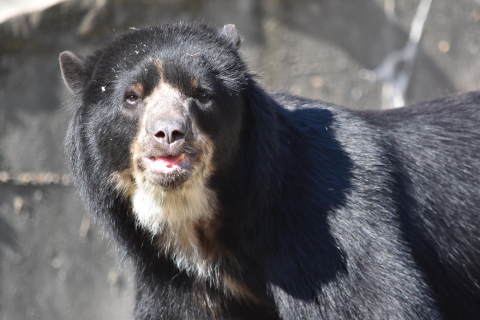Physical Description
A rough-skinned newt, the emperor newt has distinct bony ridges on top of its head and back and a row of warts running down each of its sides. Its body is round with a flat, broad-finned tail. The body is a dark brownish-black color with orange or yellow pigment on the head. Although color varies between individuals, the patterns of markings are relatively constant.
Males and females look very similar. In general, females can be distinguished from males by their larger, more robust size.
Size
The emperor newt can reach 4.5 to 6 inches (12 to 15 centimeters) in length.
Native Habitat
These newts are found only in western Yunnan province in China in the mountains along Nu, Lancang and Yuan rivers at elevations between 330 and 8,200 feet (100 and 2,500 meters).
Emperor newts spend the majority of their lives exclusively on land. During the breeding season, they live in water fields, like rice paddies, ponds or humid grasslands beside trenches.
Food/Eating Habits
Newts feed on earthworms, centipedes, snails and other small invertebrates.
At the Smithsonian's National Zoo, they eat earthworms and small crickets two to three times a week.
Reproduction and Development
In the wild, the emperor newt typically breeds May through August, which is monsoon season. During courtship the male and female turn in circles underwater, with their snouts nearly touching. The female deposits eggs on rocks and plants in standing bodies of water. The eggs can be deposited singly or in clumps on aquatic plants.
In zoos, breeding can be initiated by keeping the animal in the lower 60s and on a fairly dry substrate during the winter, followed by temperatures in the 70s and increased humidity during the summer.
Conservation Efforts
The emperor newt is near threatened, as it faces serious threats from habitat loss, habitat degradation and over-harvesting for traditional Chinese medicine.
Help this Species
- Support organizations like the Smithsonian’s National Zoo and Conservation Biology Institute that research better ways to protect and care for this animal and other endangered species. Consider donating your time, money or goods.
- Share the story of this animal with others. Simply raising awareness about this species can contribute to its overall protection.
Animal News

Get to Know the Herd of Asian Elephants Living at the Zoo


